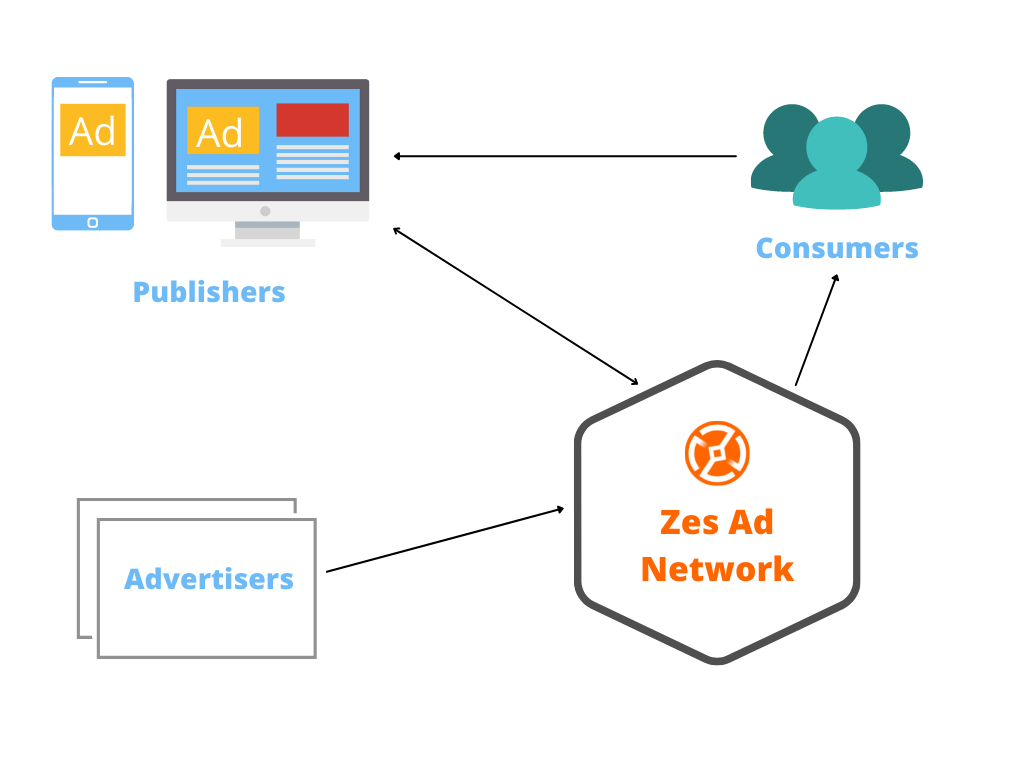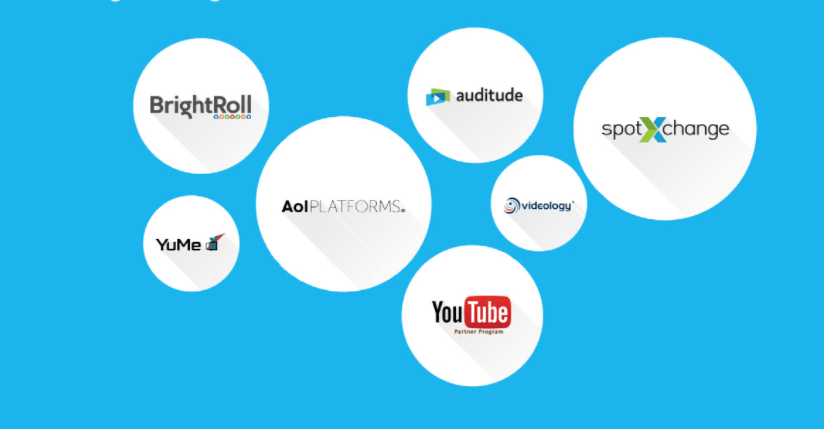When print publishers first started going online, they soon realized that they needed a way to earn some revenue, so they looked at the main revenue model used in print advertising- and online. The goal is to replicate it in the world.
Just go through the video below explaining Ad Network.
Table of Contents
What is an Ad Network?
An advertising network is a technology platform that acts as a broker between a group of publishers and a group of advertisers. Advertising networks were one of the first advertising technologies to appear when online advertising began in the mid-90s. They are responsible for the same things that they are today - helping advertisers to purchase the available ad space (inventory) for multiple publishers.
Although you would expect the term “advertising network” to cover all types of media (print media, television, radio), it is used exclusively in the context of online advertising.
Advertising networks traditionally collect unsold ad lists from multiple publishers and provide these impressions to advertisers at a much lower price than publisher direct sales. This type of listing is often referred to as non-premium or residual. Learn the difference between Display and Native Ads
Today, however, some Ad networks take a more strategic approach and tend to offer their advertisers more exclusive deals at premium prices. They make a cherry-pick and pre-purchase list from many top publishers, and then resell at premium prices. Although this arrangement is very expensive for advertisers, it ensures a premium placement of their ads.
Advertising Network The Evolution

The competition for market share between supply-side platforms and advertising networks continues, with publishers and advertisers competing for revenue. At the same time, the two are increasingly trying to provide some functionality of the other, significantly blurring the line between them.
As sellers are looking for an all-in-all solution, we are currently looking at the “two-to-one” scenario — advertising networks offering more of SSP’s diverse functionality.
In contrast, SSPs are implementing certain features of advertising networks in an effort to attract premium publishers. They allow advertisers to make purchases directly, which makes them similar to ad networks so that they connect the supply side to the demand side. It usually involves the development of the programmatic direct (more on the programmatic direct below).
This further blurs the line between them.
For example, ad networks add programmatic engines that optimize purchased RTB equipment as they gradually surpass the premium list. In addition, they are linking the rest of their material to DSPs that have been selected to increase filler rates for their publishers’ portfolios.
How does an Ad network work?
Ad networks take all available lists from the publisher and sell them as packaged impressions to advertisers.
Here is how the advertising network works:
- An ad network provides a large number of publishers with a list of required amounts to advertisers on an auction basis.
- Advertisers can set up campaigns directly using the Ad Network Advertising-Management Panel, or set up pixels from third-party ad servers for verification purposes, and provide comprehensive reporting when running campaigns across multiple ad networks and publishers.
- The advertiser sets the campaign parameters (targeting, budget, frequency cap, etc.), and the publisher installs ad-network ad tags on their site either by inserting these tags directly on the page or by using a first-party advertising Server.
- When an ad is published, the advertiser may rotate multiple banners on the Website using the Advertising Network’s Advertising-Management Panel without consulting the Publisher.
In the early days of online advertising when there were fewer sites and advertisers, many publishers used only one advertising network to sell leftovers.
However, as the number of publisher sites increased, they soon discovered that they could no longer sell their entire list on a single ad network and face lower filling rates.
In an effort to increase filling rates, publishers have begun to use multiple advertising networks, some of which offer a premium list and others a rest list.
How Do Advertising Networks Benefit Advertisers and Publishers?
Publishers
The most obvious advantage for publishers is the possibility of selling a list that is not sold through direct contracts, but this does not protect the publisher from “wasted” impressions - i.e. It is not possible to overfill and sell all your advertising lists.
Advertiser
Advertising networks are primarily responsible for helping publishers sell residual lists, but they also offer a number of benefits to advertisers:
Scale: An advertiser can purchase more lists from multiple publishers through an intermediary and centralized reporting for the campaign.
Save time: An advertiser sets up a campaign once and does not have to sign a separate entry order for each publisher.
Campaign Reach and Measurement: Campaign Reach is measured and the frequency capping is applied throughout the campaign.
Why are Ad Networks Important?
Ad networks are essentially a monetization element in the mobile networking ecosystem. They act as technical and commercial intermediaries between advertisers and publishers.

At the technical level, integration is often provided to provide supply-side their inventory and to activate and monitor demand-side activities. Commercially, advertising networks facilitate payments and transactions. Without advertising network solutions to attract demand, publishers would have to enter into agreements with each advertiser.
Different types of Ad networks?
Below are some of the major types of advertising networks:
- Premium Ad Networks: Offer a list of leading publishers.
- Vertical advertising networks: item-specific networks-e.g. Advertising Network, Technology
- Affiliate Network, Automotive Advertising Network, Fashion Advertising Network, etc.
- Network-specific or list-specific ads (eg mobile, video, local): focus on a specific type of list.
- Display and affiliate advertising networks: usually using the revenue share, CPC, or CPA pricing model. With traditional advertising networks, an advertiser buys a “package” of stamps based on CPM.
Final Thoughts
Ad networks work effectively to sell the list of remaining ads. Typically, advertising networks take the rest of the list from multiple publishers, segregate them by population, and sell segmented segments specifically to advertisers looking for similar impressions.
Publishers work with advertising networks to find opportunities to sell inventory that cannot be sold through direct sales. The unsold inventory loses revenue to the publisher.
We have tried to explain everything you need to know about ad networks and how they work for the benefit of advertisers and publishers, however, we are here to provide you with the latest information about networks. Keep updating.
We have also covered other important topics related to online advertising which are:
Feel free to share your experience, thoughts in the comment section below. Thank You.




4 Comments
Emelia
I am genuinely grateful to the holder of this website
who has shared this great article at here.
Oscar
It’s really a cool and helpful piece of info. I am satisfied that you simply shared this helpful info with us.
Please stay us up to date like this. Thank you for sharing.
Felipa
Great blog you have got here.. It’s difficult to find
excellent writing like yours nowadays. I really appreciate individuals like you!
Take care!!